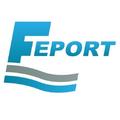
THE SHIP-PORT INTERFACE: IMPROVING SAFETY, SECURITY & EFFICIENCY IN THE AGE OF SCALE
Scheduled immediately after the 3rd session of IMO’s Sub-Committee on the Carriage of Cargoes and Containers (CCC), attended as usual by ICHCA in its NGO capacity, The Ship-Port Interface seminar will provide a timely chance to review key legislative developments at IMO and elsewhere. This includes current work on safe mooring and ships lifting appliances, as well as reflecting on the first few months of the new IMO SOLAS VGM container weight rules that came into force worldwide on 1 July this year.
Despite the introduction of advanced vessel and cargo handling technology, many operations at the ship-port interface remain largely manual, posing hazards both on deck and ashore that lead to injuries and deaths, as well as damage and loss to cargo, ships, cranes and port infrastructure.
The recent rapid growth in vessel size and much bigger cargo exchanges have created new technical and operational challenges both on the approach to port and at the terminal – unfortunately illustrated this year by a number of groundings and ship-crane collisions involving large and ultra large box ships. This includes the 396m, 19,100TEU CSCL Indian Ocean, which ran aground in the River Elbe on its way into the Port of Hamburg, Germany, during February. In May, the 13,100TEU, 366m COSCO Hope collided with a crane on its way out of Port Said, Egypt, causing a large fire on the berth.
Increases in ship size and cargo handling peaks have also highlighted – and potentially increased – long-standing risks and inefficiencies at the ship-port interface, including container lashing and twistlock handling, lifting people under cranes and working at height on and alongside ships in port. These topics will be explored during the day as part of the broader debate on how shipping lines, ports and terminal operators can collaborate in new ways to improve the safety, efficiency and productivity of vessel berthing and handling operations.
Discussions will also address the impact of today’s heightened security concerns – both physical and virtual – as well as the practical effects of new environmental requirements such as shore power for vessels.
Where are the biggest risks today? How do current industry practices need to change? Where are new approaches, relationships and ‘joined-up thinking’ most needed? And what role can innovative technology – including automation, IoT/M2M and big data platforms – play in addressing the multiple challenges? These are some of the big questions to be explored during the day.
Last but not least, the seminar will touch on Ports of Refuge and handling of distressed vessels. New EU Operational guidelines for ships in need of assistance were presented by the European Commission this January following the fatal MSC Flaminia accident in summer 2012 and have now been taken forward within IMO’s Maritime Safety Committee. Ultra-large ships and the general increase in ship size across many trades create new risks and challenges for emergency response, requiring fresh dialogue between institutional and industry stakeholders.
Improving the safety, security and efficiency of operations at the ship-port interface is truly a cross-party issue. Ship designers, owners and financers, classification societies and insurers, container designers and owners, ocean carriers, port and terminal operators, stevedores and lashers, equipment and technology suppliers and legislators all have a stake. As the leading NGO association representing the interests of the global cargo handling industry, ICHCA International is pleased to once bring all the interested industry parties together to share the latest information and discuss the way forward.
We hope that you will be able to join us this September for a valuable day of education, debate, information exchange and networking with our expert panel of speakers and with fellow industry professionals.













